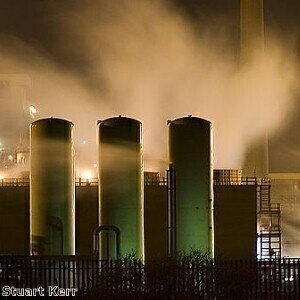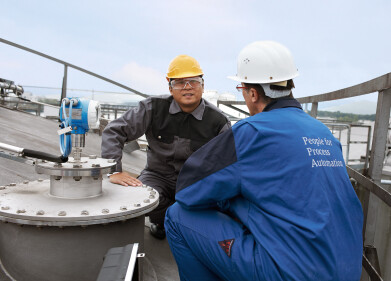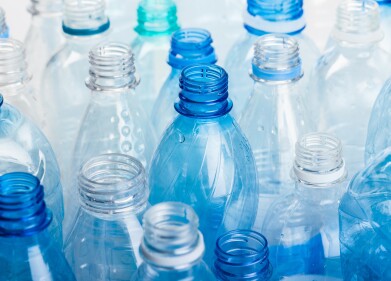Analytical Instrumentation
Issues With Liquefied Calibration Gas Mixtures
Aug 03 2017
Liquefied gas mixtures, or ‘liquid mixtures,’ are often used for calibrations where the application demands calibration with a ‘heavy’ or longer-chain hydrocarbon (see demystifying-hydrocarbon-gas-mixtures-in-non-refillable-cylinders). Liquid mixtures have the advantage of closely matching the product being analysed (e.g. stream gas), while also offering increased efficiency by allowing an increased number of calibrations with the same cylinder, when compared to a gaseous mixture.
While liquid mixtures do have significant advantages, there are some disadvantages to consider.
Liquid mixtures are inherently unstable. They are best used quickly, as the longer they are left unused, the further they will move from the originally certified composition. This is due primarily to vapourisation and condensation. Vapourisation describes a liquid becoming a gas and condensation describes a gas becoming a liquid.
CAC Gas & Instrumentation describes in a previous article (see their blog: Specialty Gas Valves & Connectors for High Pressure Cylinders) how the dual port/dip tube valve worked. A ‘headspace’ of gas (typically helium) is kept at a constant pressure. This headspace applies pressure on liquefied gases in order to keep them in the liquid phase. This is also known as an “overpressure.” The stability of the liquid mixture is directly related to the relationship between the gas contents and liquid contents in each cylinder.
The kinetic theory of matter describes how all matter is constantly in motion. The rate of which depends on the amount of energy it has: solids with the least amount of energy, and gases with
the most. The amount of energy is directly related to the temperature the matter is in. Therefore, solids melt into liquids and evaporate into gases with increases in temperature.
In a gas mixture, the molecules of each component are constantly moving. This assists with homogeneity of the mixture by constantly mixing it – but it is also the reason for reactive compounds to decompose. They will eventually come into contact with another material and react into a new compound.
In a liquid mixture, the issue of reactive components meeting a reagent is still present but the main issue affecting stability is the transition of compounds between the liquid phase and the gas phases.
There are two types of vapourisation: evaporation, and boiling.
Evaporation can occur at any time where a molecule is near the surface of a liquid, has the energy to escape, and the gas into which it moves is not fully saturated. Evaporation occurs slowly so the effects may not be immediately apparent. Regardless, it will always occur inside the cylinder and can’t be avoided.
Boiling occurs when the vapour pressure of the liquid is equal or greater than the pressure exerted on it by its surroundings. Boiling releases gases very quickly and must always be avoided. The vapour pressures of each component will determine the feasibility of the mixture, and the required ‘overpressure’ to keep them in the liquid phase.
Condensation is the opposite of evaporation and can occur when the cylinder cools or the overpressure is increased. The previously evaporated gases now re-enter the liquid phase. This may sound like a good thing, but if the liquid mixture was used during the time that these components were in the gas phase, they will now re-enter the liquid phase at different ratios than originally intended. This will change the overall composition of the mixture.
The amount of evaporated gases the headspace can contain is relative to its saturation point. This point is determined by the temperature. Changes in temperature will change the saturation point thus allowing evaporation or condensation to occur.
Rules to follow to get the most out of your liquefied gas mixture
1. Keep the cylinder cool and the temperature stable.
There is no advantage to heating a liquefied gas cylinder, unlike with a gaseous mixture where heat typically helps with stability and homogeneity of non-reactive components. Keep the temperature stable to prevent phase transition as much as possible.
2. Use the smallest size cylinder possible.
As the contents of the cylinder are used the gaseous headspace increases in volume relative to the liquid. This means that there is a greater mount of space available for liquids components to evaporate into and more of the calibration mixture will be lost to the headspace. As all components evaporate at different rates, the longer the mixture is kept, the further it will move from the desired composition. By using a smaller cylinder, the cylinder contents will be consumed more quickly, reducing the amount of time for evaporation to occur.
3. Provide a constant overpressure.
Rather than topping up the overpressure periodically, keep the overpressure permanently connected to a gas source of the appropriate pressure and gas type. This will prevent changes in saturation point of the headspace and will also maintain the temperature (when a gas is compressed, it heats up).
4. Keep a gaseous reference standard.
Liquid mixtures are great for day-to-day verifications due to their efficiency. However, to ensure the accuracy of your instrument, you should always have a gaseous reference standard on hand for periodic calibrations and to keep track of the stability of your liquid standard.
5. Use a constant pressure cylinder.
Constant pressure or “piston” cylinders are designed with a piston inside, forming a seal against the internal walls. This piston provides a physical barrier between the ‘overpressure’ gas and liquid mixture, preventing evaporation and condensation from occurring. Unfortunately, a piston cylinder can’t prevent boiling. Care still needs to be taken when designing a mixture. Components which boil off will form bubbles within the liquid mixture, altering the mixture ratios and resulting in a poor or incorrect calibration. Piston cylinders are very expensive and very small in volume. This may negate the efficiency of the liquid mixture and makes a gaseous mixture more viable.
Digital Edition
PIN 25.1 Feb/March
March 2024
In This Edition Safety - The technology behind the ION Science Tiger XT - Safety with ammonia and LOHCs as hydrogen carriers Analytical Instrumentation - Discussion on new tribology te...
View all digital editions
Events
Apr 22 2024 Hannover, Germany
Apr 22 2024 Marrakech, Morroco
Apr 22 2024 Muscat, Oman
Apr 22 2024 Rotterdam, Netherlands
Apr 23 2024 Singapore


















